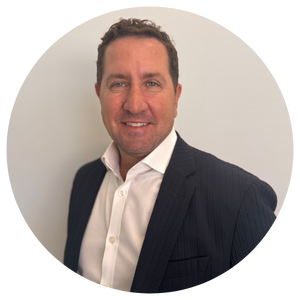
Bridging the Compensation, Culture, and Compliance Gaps for Value Realization in 2025
The Healthcare and Life Sciences (HCLS) sector continues to be a powerhouse for global Mergers & Acquisitions (M&A) activity, driven by digitalization, specialized therapeutics, and the imperative for integrated care models. When European entities acquire US counterparts, the primary risk to deal value shifts from financial modeling to human capital integration. In 2025, transatlantic HCLS deals face an unprecedented trifecta of challenges: navigating the US’s competitive, burnout-driven talent market; identifying and realizing true operational synergies; and bridging the fundamental divide between US and EU compensation and benefits philosophies. Successfully integrating talent across these vastly different labor ecosystems is now the defining feature of deal success.
The Fierce Pursuit of Specialized US HCLS Talent
The US HCLS talent market in 2025 is defined by scarcity, rising costs, and high turnover – especially for highly specialized roles in advanced therapeutics, bioinformatics, and AI-driven diagnostics. Would-be European acquirers of US HCLS companies must move beyond reactive hiring to adopt future-ready strategies:
- Skills-First & AI Operationalization: The industry is moving toward skills-based hiring, particularly for critical roles that drive transformation and innovation (e.g., Gene Editing, GenAI). While AI is being widely operationalized to streamline administrative burdens (scheduling, screening, drafting job descriptions), it has yet to be proven as a strategic tool for high-level talent strategy or predicting cultural fit. Smart integration plans, therefore, should prioritize leveraging AI to accelerate efficiency while reserving human expertise for assessment and strategic sourcing.
- EVP and Retention over Recruitment: High turnover, burnout, and the rise of non-traditional healthcare employers (tech, consulting) have made retention the top priority. The Employer Value Proposition (EVP) must be hyper-personalized and focused on fostering Equity, Inclusion, and Belonging (EIB), shifting the focus from simply who is hired to who stays, grows, and thrives. Post-merger, US employees often prioritize clear career pathways, flexibility, and supportive management when choosing to remain with the combined entity.
- Proactive Pipelining: Due to the shrinking talent pool, organizations might rely heavily on talent pipelining and targeted outbound campaigns, establishing relationships with specialized talent before roles are officially posted. Integration teams could leverage the European target’s existing academic partnerships or regional centers of excellence to feed into the US-side pipeline for highly technical roles.
Operational Synergies: A Shift to Scope and Capability
Transatlantic HCLS M&A is increasingly dominated by scope deals—acquisitions focused on new technology, market access, or specific clinical capabilities, rather than simple scale. Synergy capture in these deals is more complex and requires aggressive planning that goes beyond traditional cost-cutting:
- Revenue Synergies in R&D and Market Access: The most significant value tends to be found in revenue synergies, such as combining the European acquirer’s innovative R&D capabilities and global footprint with the US target’s vast commercialization strength and specialized talent access. Due diligence must build complex synergy models to validate these revenue forecasts, which are inherently more difficult to predict than cost savings.
- Consolidating Back-Office Functions: Classic operational synergies still apply, particularly in consolidating redundant non-patient-facing functions. Examples include streamlining financial administration, IT infrastructure, and back-office services like Revenue Cycle Management (RCM) or billing. This consolidation can lead to immediate cost savings and process standardization but must be executed early in the integration lifecycle to realize value.
- Cultural Alignment as a Synergist: Synergy capture is often derailed by poor cultural alignment. Integration planning should prioritize blending cultural elements early on. For a European company acquiring a US firm, navigating different approaches to hierarchy, risk tolerance, and work-life balance will be crucial to retaining the very R&D or specialized operational talent the deal was meant to secure.
Navigating the Transatlantic Compensation & Benefits Chasm
The starkest challenge in harmonizing US and EU operations lies in aligning compensation, benefits, and labor practices, which reflect fundamentally different societal models:
- The Salary and Contribution Divide: US salaries are generally higher, often dramatically so for specialized roles (e.g., mid-level tech salaries can show a 30–50% gap). However, the underlying employer cost structure differs significantly. US employers bear steep costs for private, market-driven healthcare ($8,000 to $16,000+ per employee annually), while EU employers bear heavy social charges and payroll contributions that fund state-backed universal healthcare and pensions. Integration teams should employ dual benchmarks, modeling both equal salaries (for equity assessment) and market-specific total compensation (for budget control).
- Mandated Benefits and Labor Law: Europe offers generous, often legally mandated benefits, including a minimum of 20+ paid vacation days, comprehensive parental leave, and stricter labor protections regarding notice periods and dismissal costs. In contrast, US benefits are a competitive tool, varying widely by state and company size. Attempting to impose a US-centric “low vacation, high private insurance” model on EU operations could result in catastrophic talent loss and non-compliance with local labor law.
- Compliance Complexity: The US operates under a fragmented legal structure of both federal (e.g., ACA and COBRA and state-specific laws (sick leave, minimum wage, worker classification), whereas the EU operates under centralized directives, but implementation varies across 27 Member States (e.g., Spain and Portugal requiring 14-month salaries). HR teams must deploy local expertise to avoid compliance pitfalls, particularly around worker classification and termination processes.
In conclusion, successful transatlantic HCLS M&A requires HR integration teams to treat human capital as a strategic asset, not just a line item. Value is realized when the best of both labor ecosystems is preserved, harmonizing compensation and benefits while leveraging the combined entity’s specialized talent pools through proactive, skills-focused strategies.
In the next installment of our Europe-US Cross-Border HCLS M&A series, we move from people to data, tackling the ultimate transatlantic compliance hurdle: the clash between GDPR and HIPAA. Learn how European acquirers can avoid major fines and deal breaks by meticulously auditing and integrating data governance across two radically different legal frameworks.
About the Authors:

Nathan Cali is a Managing Partner at Noble Capital Markets with more than 18 years of Capital Markets experience. He has been a lead Managing Director/Head of the Healthcare and Life Sciences Investment Banking and Advisory franchise at NOBLE since 2017 and was previously a sell-side equity analyst for 9 years. Nathan is a Board Member of Precise Bio, a tissue engineering, biomaterials, and cell technologies company, including cardiology, orthopedics, and dermatology. He was previously a board observer of Eledon Pharmaceuticals (ELDN:NASDAQ, f.k.n.a. Anelixis Therapeutics, Inc.), a phase II biotechnology company. Prior to joining NOBLE, Nathan gained investment experience as a portfolio account analyst/manager at Franklin Templeton Investments. Nathan also currently holds series 7, 79, 86, and 87 FINRA designations.

Hinesh Patel, MCMI ChMC is a Partner in CNM LLP’s Los Angeles Office with over 20 years of experience in accounting. He leads and oversees the firm’s Accounting and Transaction Advisory practice. He brings a vast knowledge of US GAAP, technical accounting, and International Financial Reporting Standards (IFRS) reporting requirements to his role at CNM. Hinesh primarily focuses on technical accounting, IPO readiness, SEC reporting, and mergers and acquisitions. Prior to joining CNM, Hinesh worked as a Senior Manager at Deloitte with a primary focus in the technology, manufacturing, consumer business and entertainment industries for both public and private companies. He has assisted various companies through the IPO process and advised on a range of accounting services including technical accounting, financial reporting, and new business processes requirements.

Matthew (Matt) Podowitz is the founder and Principal Consultant of Pathfinder Advisors LLC, bringing experience on 400+ global M&A engagements to his clients. He specializes in the critical operational and technology aspects of M&A transactions, providing due diligence, carve-out, integration, and value creation services. Known for practical, actionable advice derived from extensive hands-on experience with healthcare and life sciences transactions, Matt helps companies, investment banks, and private equity firms navigate complex cross-border HCLS M&A through every step of the transaction lifecycle. Leveraging his perspective as a dual US/EU citizen, he provides seamless support for transactions in both markets. His background includes leadership roles at firms like Ernst & Young, Grant Thornton, and CFGI.

Chris Raphaely is the Co-Chair of Cozen O’Connor’s Health Care & Life Sciences Practice where he provides sophisticated transactional and regulatory counsel to an array of health care providers and investors in the health care industry. His practice focuses on mergers, acquisitions, and divestiture transactions for health care clients and the comprehensive regulatory schemes requisite to doing business in the health care space. Chris routinely handles matters involving payer negotiations, payment disputes and contract enforcement, accountable care organizations, management services organization, clinically integrated networks, value based payment arrangements, pharmacy benefit management and third party administrator contracts for self-insured employers, digital health, organizational and governance structures, HIPAA, information privacy and security, tax exemption, Stark Law, fraud and abuse matters, clinical integration, medical staff relations, facility and professional licensing, Pennsylvania’s Medical Marijuana Act, and general compliance. Prior to joining the firm, Chris served as the deputy general counsel to Jefferson Health System and general counsel to the system’s accountable care organization and captive professional liability insurance companies.
